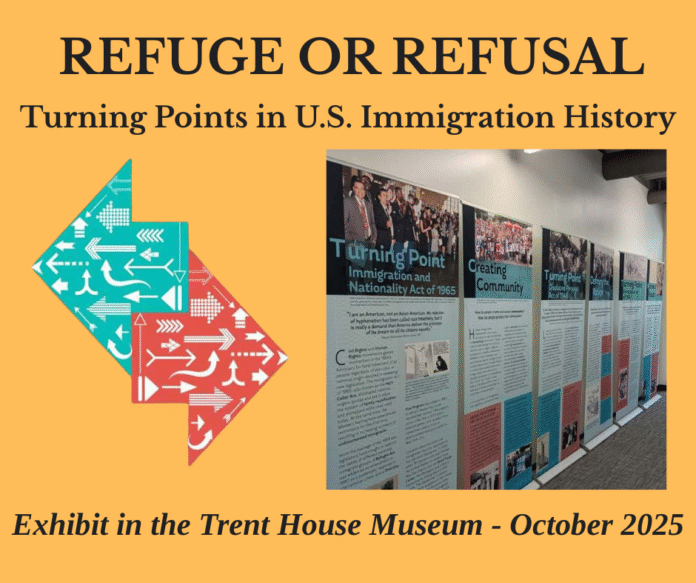The Trent House Association hosts an exhibit exploring the history of immigration to the United States and immigration policy decisions at key points – 1790, 1882, 1924, 1948, and 1965. This exhibit will be on display in the historic house throughout the month of October during regular tour hours – Wednesday through Sunday from 1:00 to 4:30 pm.
The movement of people from around the globe to settle on the North American continent is centuries old. William Trent and his predecessor Mahlon Stacy were the first European immigrants who chose to live what became the town and then city of Trenton, New Jersey. While their decisions to immigrate were voluntary, Europeans moving to the American colonies and to the United States in its first half century brought with them kidnapped Africans and in some cases fellow Europeans under coercion or deception.
Moving to a new country on a far-away continent and beginning a new life there was a momentous experience for individuals and families. The act of immigration was influenced both by personal aspirations and needs and by global conflicts and economic conditions. Large scale immigration also has lasting impacts on the new homeland.
During the month of October, the Trent House will also host talks about the movement of people to New Jersey – children smuggled from Scotland in the 18th century, immigrants from Ukraine in the 19th century, and citizens from Puerto Rico in the 20th century. More information on these talks can be found at www.williamtrenthouse.org/upcoming.html.
The William Trent House Museum is a National Historic Landmark in the Crossroads of the American Revolution National Heritage Area and on the Washington-Rochambeau Revolutionary Route National Historic Trail. The Museum is dedicated to sharing the authentic history of the house, property, and people with our communities, connecting the past with today and tomorrow. Owned by the City of Trenton, it is operated by the Trent House Association, which is supported by the generosity of its donors; by grants from the New Jersey Council for the Humanities, the New Jersey Cultural Trust, the New Jersey Historic Trust, the Mercer County Cultural and Heritage Commission with funding from the New Jersey Historical Commission, and the Bunbury Fund and the New Jersey Arts & Culture Renewal Fund of the Princeton Area Community Foundation; and by contributions from NJM Insurance Group and Orion General Contractors. For more information, visit www.williamtrenthouse.org.
